Why do young people commit suicide and how parents can prevent it?
[ad_1]

Highlights
- Why do children commit suicide?
- Are Keralites more prone to suicide?
- After the passing: ‘We will never stop grieving. We miss him every day’
- Why is death becoming an escape route for many nowadays?
- Suicides in UAE: What drives people to take their lives
- How suicides can be prevented
The Indian state of Kerala is engaged in an all-out battle against COVID-19. The early success is slowly fading as death toll steadily rises. Another startling statistic emerged recently exposing a darker, more alarming side. As many as 66 teenagers and preteens committed suicide in the state in the first 100 days lockdown.
Kerala is not exactly new to people familiar with suicide rates in India but even for a state which has the dubious honour of leading the number of suicides for as many as two decades in the country, teenage suicide figure is a new low.
Suicide among young children and adolescents is a growing concern the world over and we explore the issue in some detail, especially relevant in the times of coronavirus.
Suicide helplines in UAE
Emergency Hotlines: 112 and 911
Exclusive for Indian Expats: 800 46342
Why do children commit suicide?
Dona Cherian, Assistant Online Editor
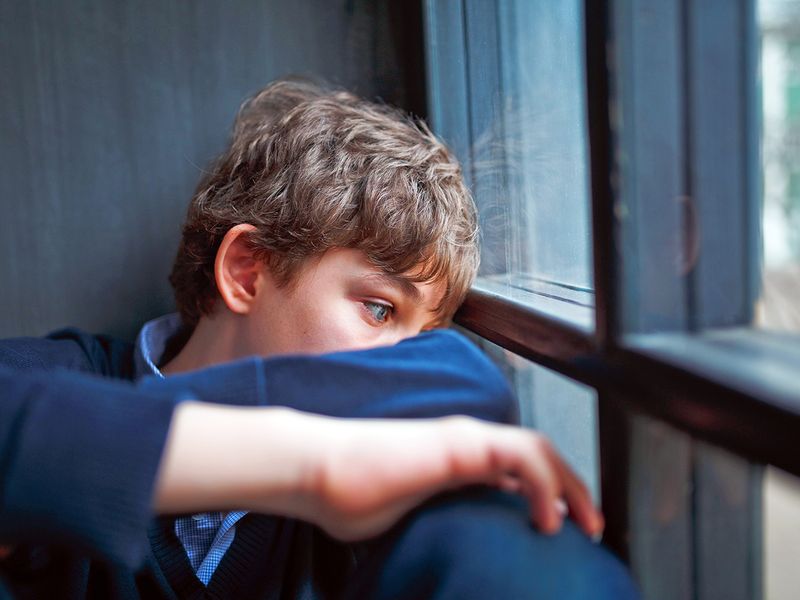
Suicides are more common than one may think. Every 40 seconds a person dies by suicide in the world.
A scarier statistic, however, is that suicide is the third leading cause of death in 15 to 19-year-olds, according to the World Health Organisation. The most common methods of suicide are hanging, pesticide self-poisoning, and firearms. According to the global average, males are more likely to commit suicides than females.
But, why would any child want to commit suicide?
Psychological illness
Several studies from across the world show that suicidal thoughts and the suicide attempt stems, for over 90 per cent of cases, from some form of psychological disorder. This includes depression and other mood disorders, substance abuse, anxiety, bipolar disease etc.
In teens, the symptoms for these differ from those displayed by adults and are, more often than not, misdiagnosed or not diagnosed at all.
Depression in teens could be triggered by major life upheavals or struggles such as parents’ divorce, learning issues, bullying, abuse or neglect. Some teens could also be pre-disposed to depression owing to genetics or family history and learned way of negative thoughts.
Your young child or teen may be showing signs of mild or severe depression if he or she is displaying any or all of the following symptoms as defined by the American Academy of Child and Adolescent Psychiatry (AACAP)
• Changes in eating or sleeping habits
• Frequent or pervasive sadness
• Withdrawal from friends, family, and regular activities
• Frequent complaints about physical symptoms often related to emotions, such as stomachaches, headaches, fatigue, etc.
• Decline in the quality of schoolwork
• Preoccupation with death and dying
In young children, according to AACAP, suicide is an impulsive decision while in teens and young adults it is mostly seen as a solution to hard life situation and triggered by stress, loss, financial issues or pressures to succeed.

Studies, pressure
In 2018, statistics showed that in India one student committed suicide every hour on average. It was the highest rate in a decade in the nation. When it comes to studies and the resulting pressures from family or peers, the fear of failure is just one of the reasons of suicide ideation in young people.
Parental pressure on course and career choices is seen by experts as a major stress factor for teens and young adults. Children under 15 are more likely to attempt suicide if they perceive that parents are not concerned about their emotional well-being according to a research paper published by University of Cincinnati in 2012.
The researchers found that even when parents felt that they were caring adequately, it is the perception from the child’s side that ultimately mattered in terms of suicide ideation. The pressure from family may also become a reason for suicide ideation if and when a child or teen feels unable to share his or her feelings or struggles without fear of reprimand.
Online bullying, games, social media
With young children and teens being online, now more than ever, a real risk factor is cyber bullying. Bullying in general almost always involves some kind of power imbalance, repetition and intention to hurt, a 2018 report by US National Centre for Education Statistics explained. The same report shows that one in 5 children report being bullied per year.
Victims of cyberbullying are more prone to suicide ideation than those who haven’t been bullied, another 2018 report published in the Journal of Medical Internet Search stated. Cyberbullying is also different from traditional bullying in that perpetrators also have chances of suicide ideation and attempts. Another worrying data report shows that children and teens are now resorting to self-harm online by posting self-deprecating content anonymously. Parental pressure or absence also push teens to look online for validation – which in most cases can lead to bullying, unrealistic expectations, anxiety etc.
Understanding these differences and keeping track of constantly changing methods of self-harm and bullying is what would help keep ahead of the turn when it comes to suicide and online behavior of children and teens.
Are Keralites more prone to suicide?
Jaya Chandran, Online Editor
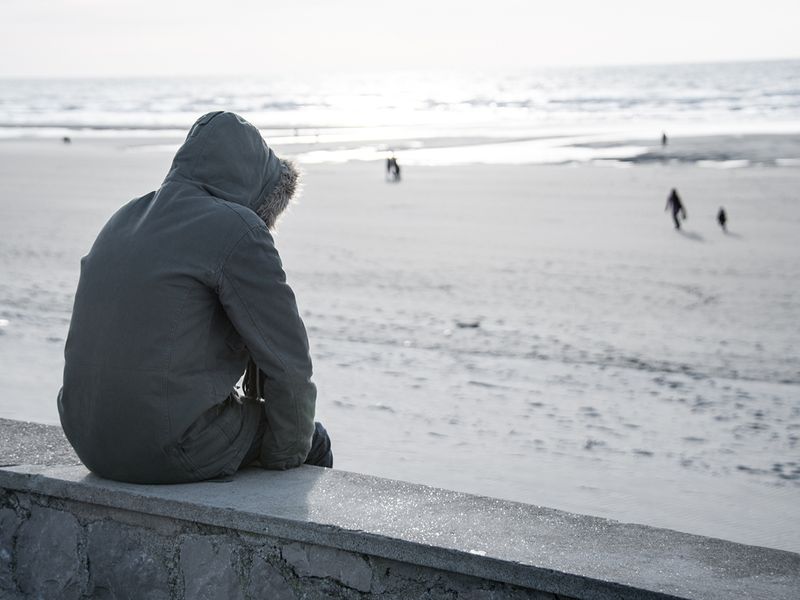
Image Credit: i stock
High suicide rates are symptomatic of a troubled society. However, we choose not to acknowledge this crucial index publically and refuse remedial action when needed. It is the dirty little secret of our society that we want to keep wrapped up forever and like all dirty little secrets they choose the most inopportune moment to rear their ugly head.
For decades, Kerala was heading the table for number of suicides among Indian states until a serious dip occurred and the state had to forfeit the dubious distinction to another south Indian union territory Pondicherry.
According to National Crime records bureau, 8,237 people committed suicide in the state in 2018, which is nearly double the number people who died in road accidents. In other words, more than 20 people kill self in the state on a daily basis. And among these the highest are in the age group between 15-45, statistics reveal.
Bankruptcy and family problems continue to be main driver of suicides followed by family problems. The male female suicide ratio is about 3:1.
According to latest available records, around 20 percent of those who commit suicide are jobless people and most of then selected hanging as the preferred mode, following by swallowing poison.
Kerala and suicide rates: The cultural question
Even though Kerala was leading India in suicide rates, there is no evidence of any historical reasoning or traits – like the Japanese one of Seppukku- that glorifies suicide and makes Keralites vulnerable to suicide. There was no glorification of suicide in any of the traditional ‘Kerala’ literature, though there are some mentions of type of ritualistic suicide performed by Tamil Kings when faced with the humiliation of defeat in war of loss of stature or dignity. In Sangam literature (approximately 200 BCE – 250 CE), there are mentions of kings fasting unto death while facing north.
However, scholars point out that this can only be treated as a reflection of a general Hindu or a pan-Indian attitude or approach to life rather than a south Indian tradition as one can find any number of such suicides in northern text traditions and historic accounts, including that of Sati and Jauhar. Sati is where a widow enters the pyre of her husband and commits suicide while Jauhar is the ritualistic mass suicide performed by Rajput women when they faced capture and humiliation by enemies.
Ideas related to purity, dignity and purposes or mission in life were the guiding principles in life then and in many of the ancient Hindu texts, the mystical concept of ‘abandoning the body’ after the ‘mission in this world is accomplished’ was sometimes given predominance over letting the life run its full course. It won’t be farther from truth to say that eastern religions have more or less accepted death and treated life itself is a cyclical entity where death is only one of the elements. One argument is that death is never considered, philosophically or metaphorically at least, as a complete end to anything.
Hence, unlike the western religions, the eastern systems were more tolerant towards the idea of embracing death at any point for ‘upholding the purity’ or ‘after one’s job in this universe is done’. It can be argued, that there were two different types of suicides. One is killing self to ease pain, escape duties or worldly troubles, which is called atmahuti, while the other one is atma tyaga, which means giving up life as an extreme form of sacrifice. The ordinary atmahuti is considered on par with a sin and the one who does it will have to pay the price for it, while the sacrifice of one’s life under extraordinary circumstances is said to release one from the unending karmic cycle of life-death and consequences – which is the equivalent of moksha or supreme attainment in Hinduism.
Popular myths: Pazhassi Raja and Veluthampi Dalava
The other one was the suicide of Velu Thampi Dalava (1765–1809), the prime minister of Travancore who rebelled against the East India Company’s rule in India, after his defeat in the final battle.
Other two aspects that are likely to influence this question are the importance of genetics and ethnicity in contributing to suicide. The relation between suicide and genetics are complicated at best. While there is a genetic angle in suicide it is only one of the many components, and its predominance over others, such as environmental stimuli for example, are debatable at best.
But then how did Kerala top the suicide charts? At least there is statistical evidence that in the 70s 80s and 90s Kerala suicides reates were more than double that for India.
• 1970s: Suicide rates in India was between 5.9 to 7.8 while the figures for Kerala was 14.4 to 19.8
• 1980s: Suicide rates in India was between 5.8 to 8.5 and for Kerala it was 14.9 to 24.5.
• 1990s: Suicide rates in India varied between 8.9 and 11.20 and for Kerala, it was between 26.3 and 30.5.
There was also an interesting observation made in CDS study by Dr K Praveenlal on Family suicides in Kerala. The point was that the higher number of suicides in the state was actually not specific to Kerala, further, it was specific to the whole geographical area comprising the south Indian peninsula, and covered Kerala, Karnataka, Pudusseri and the neighbouring country Sri Lanka.
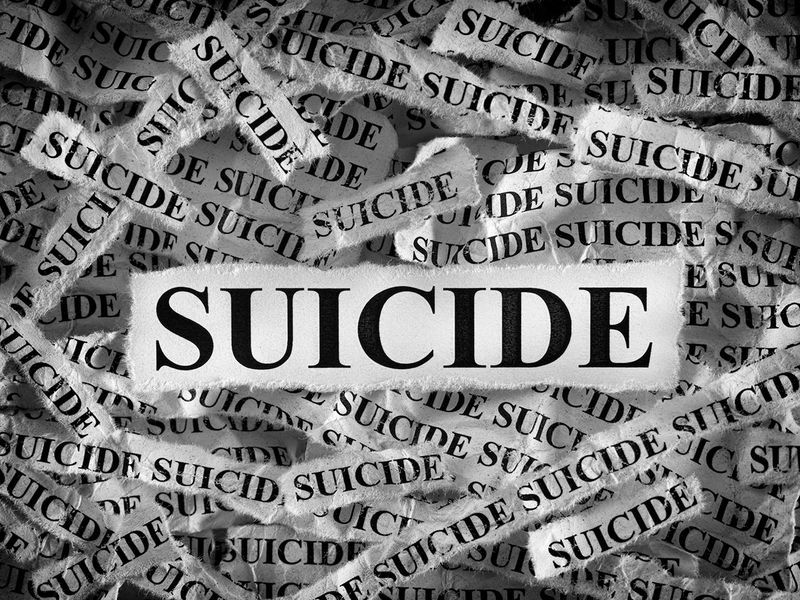
Image Credit: i stock
A society in flux
Suicide is not a natural behaviour and it is often termed paradoxical as the primal instinct of humans is to cling to life even under the most adverse circumstances.
In Kerala’s case, rapid social changes are often associated with the rise in the numbers of suicide case. And this has its origins in the 1950s when the state was formed by joining together two Princely States and a Biritish territory – Travancore, Cochin and Malabar – right after the Indian Independence. New-found statehood, independence and social and economic changes in the livelihood patterns resulted in a social tumult of unprecedented nature. Kerala was literally on the boil with a number of social movements for the uplift of different sections of people and the culmination of it all was the Communist government that came to power in 1957 through general election. A number of important reforms followed including the decisive Kerala Land reforms which paved way for the traditionally oppressed groups to come to the fore resulting in a degree of social inclusiveness which was lacking till then.
Class and caste barriers were broken down significantly and the social dynamics of the state was changed forever, bringing in a people-centric approach for the planned development of the state, an approach that was hard to ignore for future governments. The foundation stones for the famed Kerala Model were being laid. However, like any era of change, this was also fraught with paradoxes and confusion and stiff resistance from traditional quarters, the repurcussions of which would last for decades to come.
Suicide is very complex phenomenon; it is not easy to pinpoint something as its sole trigger. And if one is to consider the long-term impact of the social exercises going on from the 1950s onwards in Kerala, it is easy to observe that these changes brought about a more equitable society thereby eliminating many of the preexisted triggers.
Suicide rates India 2018
Puducherry: 33.8
Sikkim: 30.2
Chhattisgarh: 24.7
Kerala:23.5
[All India rate of suicides was 10.2 during the year 2018.]
Source: National Crime Records Bureau
‘We will never stop grieving. We miss him every day’
Karishma H. Nandkeolyar, Assistant Online Editor
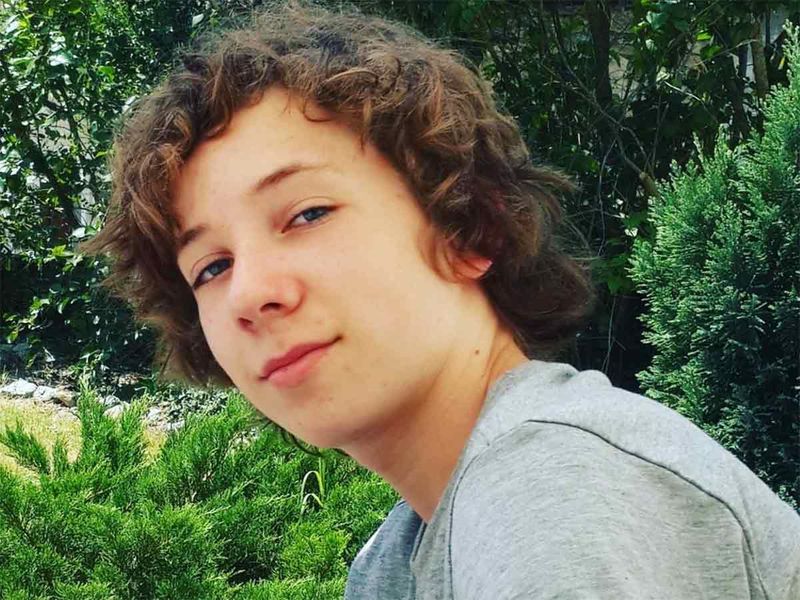
Image Credit: Supplied
“We will never stop grieving. We miss him every day,” says Ross Barfoot, father of the late Louis Smith.
As Christmas approached that December, in 2013, all seemed well for the family of six. “We were a happy family,” says British expat Barfoot.
On December 14, a Saturday, the family including 15-year-old Louis planned a meetup with friends. “Louis was supposed to come but at the last moment, he said he’d stay home and watch a movie. At that age, that’s normal,” says Barfoot.
When they returned, the family found his body.
Years later, Barfoot says, he still doesn’t know what happened. “We were a happy family, and Louis was doing well at school, he was respected. He wasn’t stressed, just the normal amount – he’d just given his mock GCSEs, which he did well on.”
The questions seemed to go on forever, with no answers in sight. “Obviously, something was making him depressed,” says Barfoot. But he hadn’t gone to his parents or siblings to speak to them about what was wrong. “Maybe he thought he couldn’t come to us with whatever was bothering him, but I’d like to think that if he had a number he could have called and spoken to [perhaps anonymously], it would have helped.”
After the incident, as the Barfoots struggled to come to terms with the tragedy, they were cocooned by their army of friends, who “took turns” to check in on them, make sure they were eating, talking, sleeping. “The worst thing [someone] can do is pull away, thinking the family needs space. Everyone is different and everyone grieves differently, but for us, it helped to have our friends’ support.”
He adds, “Another thing, don’t assume the family doesn’t want to talk about the person. We love talking about Louis. Some may not, and they’ll let you know. And that’s ok.”
Ross found strength in speaking to the people who knew the different sides of Louis; they shared various anecdotes about the helpful, soft-spoken young man who had wanted to be an architect.
When Louis took his own life, he left behind his parents, one older (18) and two younger siblings, aged six and nine. The family members, brought closer by the loss, are keener observers of one another. Ross speaks of how the dynamics within their little group changed; the only thing that matters now is family, that “our kids are healthy and happy”, he stresses.
Every day hugs are doled out. Every day questions on feelings and issues are raised. Every day, there’s a message drawn from the depths of each heart and shared: “I love you.”
(In 2014, the family set up the Louis Smith Foundation, with a 24-hour helpline, where people can speak anonymously about their anxiety, ill health or whatever is troubling them. If you, or anyone you know, is feeling low and need someone to talk to, call 800 04444409.)
Why is death becoming an escape route for many nowadays?
Biju Mathew, Online Editor

There is no one ‘real’ reason for the alarming rise in suicide deaths, say experts
The passage from life to death has always fascinated human beings. But, when that allure drives people to take their own lives, many questions pop up: Is it the mystery that lies at the other side or the notion that death snuffs all pains of life that drives people to suicide?
Is death the end of all that we know as life? Philosophers, religious scholars and ethicist have offered various explanations. Well, so far no one has been to the other side and returned to state the facts.
There are instances of suicides from time past for what one might term trivial: Zeno, the found of Stoic school of philosophy, broke his toe and then died from holding his breath in 262 BC.
Though the end result is the same, a high-thinking philosopher’s reason for suicide is far removed from a common man’s and a mentally unstable person’s plunge into the unknown.
The rise of suicide deaths
As society evolved from BC to AD and modern times, suicides too increased at an alarming rate.
With individualism and loneliness creeping into modern life, there has been a drastic rise in suicide deaths. According to last available data from World Health Organisation (WHO), there were an estimated 793,000 suicide deaths worldwide in 2016, which means an annual global age-standardised suicide rate of 10.5 per 100,000 population.
There is no one ‘real’ reason for suicides, said Dr Melanie C. Schlatter, Clinical Health Psychologist, Health Psychology UAE. “But some common denominators would be a deep struggle and despair in coping with the current situation, a loss of sense of self or feeling of isolation in tackling the issues, a sense of meaningless of life, and futility in efforts, a wish to escape from the thoughts and hardships being faced – death being one possible solution to end all the pain, and often a sense of burden to others.”
When that meaninglessness and sense of burden channel human thoughts into an escape route, suicide deaths become a reality. “I couldn’t see anything ahead. The feelings were burning a hole in me and this was a way out of that pain. The battle in my head was going to be over,” said a former patient of Dr Melanie C. Schlatter, who attempted and failed in her suicide attempt.
“I might have looked fine on the outside, but I was enveloped on the inside. I thought of a few ways to do it … and then those thoughts just stuck too. They seemed more appealing than anything else. I couldn’t think of my family anymore. I knew I loved them. I knew they loved me. But these thoughts of death just overshadowed everything. It was like a big wall separating me from everything I had once found solace in. Nothing was bringing me back to life anymore,” said the woman in her 30s who didn’t want to reveal her personal details.
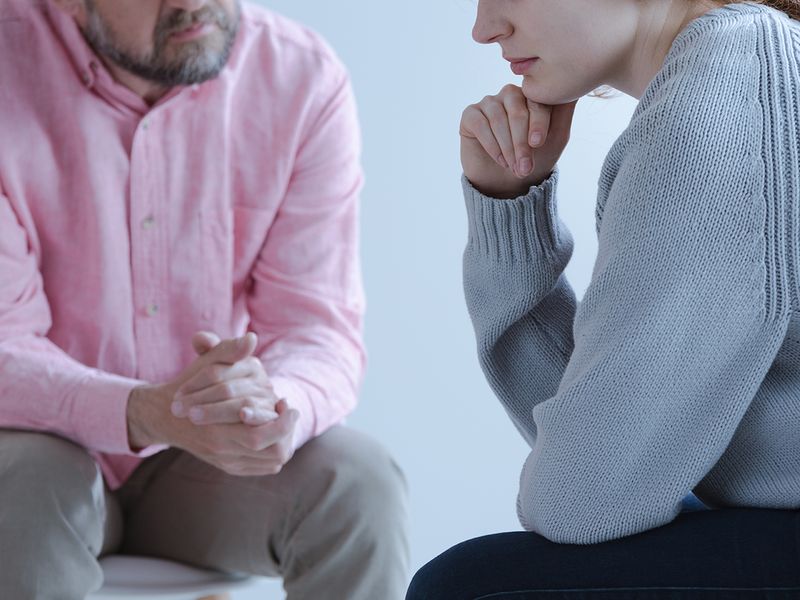
‘I want to end the pain and suffering’
Most sufferers share similar views, as recounted by Dr Sreekumar V. Nair, Specialist Psychiatrist, Mediclinic Welcare Hospital, Dubai. “I want to end the pain and suffering. I can be free from all this if I die. I am a burden and trouble to everyone. I am not able to do anything. I am a total failure. Nobody can help me. There is no hope,” these are some of the statements from my patients with suicidal tendencies, said Dr Sreekumar V. Nair.
“Looking at the patients I see, I would consider a combination of factors leading to suicide deaths and suicide attempts. Most often a life event is evident before the thought occurs. The underlying cause could be family issues, social, financial, interpersonal, job related and so on, which can lead to a sense of loss, rejection, humiliation and defeat. The mental agony, pain and distress due to this could be overwhelming and impairs the person’s normal functioning and logical thinking. Rather than thinking of an appropriate solution, the person is focused on escaping the agony by any means. Often hopelessness sets in. Then, illogical suicide becomes logical to them. So most often the desire is not of killing themselves but escaping from the emotional pain and agony,” said Dr Sreekumar V. Nair.
Some risk factors for suicide
Previous suicide attempt(s)
A history of suicide in the family
Substance misuse
Mood disorders (depression, bipolar disorder)
Access to lethal means (e.g., keeping weapons in the home)
Losses and other events (for example, the breakup of a relationship or a death, academic failures, legal difficulties, financial difficulties, bullying)
History of trauma or abuse
Chronic physical illness, including chronic pain
Exposure to the suicidal behavior of others
Light at the end of the tunnel
Explaining the emotional state of a 45-year-old Indian woman who was treated earlier for depression, Dr Sreekumar V. Nair said: “She was doing well until her son took ill after contracting COVID-19. She started becoming over protective towards her son and husband, not allowing them to even step out of the house. Panic attack, guilt and sense of helplessness overwhelmed her. Finally, she tried to kill herself.” Luckily, right intervention and therapy helped her get back to a normal life.
Gladly it wasn’t the end of the road for the former patient of Dr Melanie C. Schlatter as well: “After my attempt, I was horrified and disappointed to be alive. I was real angry too. More shame, more guilt – everything I had wanted to eradicate forever. Then, one day, some months later, I noticed the smallest bit of calm. A sense that there were solutions. That there was more to life. Like when you see a little ray of sunlight peeping out from the clouds. The actual feeling of the love that had been there for me all along. I was feeling … and it wasn’t all negative.”
In optimism lies the key, but that’s easily said than done. Whether there is light at the end of the tunnel or not, the struggle we call life is worth every bit of it and do allow for its natural closure.
Warning signs
Often talking or writing about death, dying or suicide
Making comments about being hopeless, helpless or worthless
Expressions of having no reason for living; no sense of purpose in life; saying things like “It would be better if I wasn’t here” or “I want out.”
Increased alcohol and/or drug misuse
Withdrawal from friends, family and community
Reckless behavior or more risky activities, seemingly without thinking
Dramatic mood changes
Talking about feeling trapped or being a burden to others
What you can do
Five tips from CDC for what you can do if you’re concerned about a friend or loved one:
• Ask someone you are worried about if they’re thinking about suicide. (While people may be hesitant to ask, research shows this is helpful.)
• Keep them safe. Reduce access to lethal means for those at risk.
• Be there with them. Listen to what they need.
• Help them connect with ongoing support.
• Stay connected. Follow up to see how they’re doing
[Source: American Psychiatric Association]
Suicides in UAE: What drives people to take their lives
Shyam Krishna, Senior Associate Editor
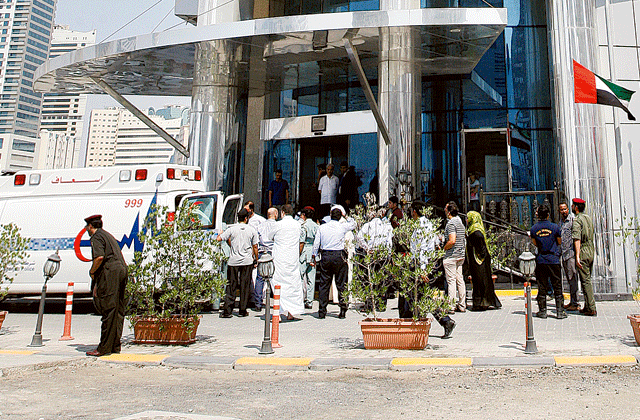
The news of a suicide is often mind-numbing. Almost every week we hear of a suicide. In the UAE, it’s mostly businessmen and teenagers who resort to the extreme step of taking their lives.
Life is precious. So what drives people to end their lives? Failed businesses, mounting debts and lack of an exit strategy could be the triggers that push people over the edge. In most cases, they would have felt cornered. Perhaps, help from a therapist or discussions with family members and friends would have opened up avenues for solutions.
Then there are the young men, who leap off buildings or hang themselves. Unemployment can’t be the reason because some of them had good jobs. So what’s the cause for disillusionment? Financial distress? A love affair gone sour? Betrayal by a loved one? In many cases, the reasons remain unknown. But most of them are linked to psychological and personal problems and debt.
The pain is excruciating when the victims are teenagers. Adolescence and teens are a difficult time for youngsters. With hormones running riot, they have to grapple with a rollercoaster of emotions. Insecurity, love affairs, poor self-worth, peer pressure, parental neglect are among the leading causes of teen angst.
Two of the major school examinations take place during this phase. Unrealistic expectations from parents can make them feel helpless. Unfortunately, some choose to end their lives, rather than fight it.
Indian expats top the list
Male, above 30 years, expatriate, single and employed, and education of secondary school level and below. This is the profile of a person who is most likely to commit suicide in Dubai in the last decade. And it is drawn up a team of researchers who studied registered suicides in Dubai from 2003 to 2009 and published their findings in the International Journal of Social Psychiatry.
Statistics on suicides in the UAE are scarce. Data published by Macrotrends indicate a steady decline in suicide rates in the country from 2005 to 2015, although there was a marginal spike in 2016.
Part of this data is in sharp contrast to figures announced by the Indian embassy in Abu Dhabi. In 2014, the then ambassador said around 100 Indians had committed suicide in the UAE every year since 2011, hinting at financial problems as the leading cause.
Suicides among Indians peaked in 2008 when 176 people killed themselves. Reports quoted officials attributing it to job losses and psychological, personal and financial problems that stemmed from the economic crisis.
It’s clear from news reports that expatriates are more likely to take their lives. One prime reason could be the lives away from their loved ones. That means an absence of emotional safety net. So when anxiety and depression take hold, there’s no one to turn to for help.
Labourers and workers in low-income brackets cannot afford to bring their families to the UAE. A solitary life in an apartment, or in the company of co-workers in worker accommodations, cannot replace the love and comfort of a family. A soothing touch and someone to listen to your woes will go a long way unburdening the mind of problems that could lead to suicide.
The Dubai study showed that the suicide rate among expatriates (6.3/100,000) was seven times higher than the rate among UAE nationals (0.9/100,000). In both groups, the male suicide rate was more than three times higher.
The researchers, which included Leena Amiri of the UAE University, found that Indians committed approximately three out of four expatriate suicides. And they were above 30 years of age.
In 2018, there was a change in the profile of victims. Most of them were under 30, according to Dubai Police.
Prominent Indians in the UAE
Keralites form a good portion of the Indians who commit suicides in the UAE. Spiralling debt tends to be one of the main causes. Two of the cases in recent years happen to be the untimely deaths of two prominent businessmen from the south Indian state.
Joy Arakkal, industrialist: He was known as an oil tycoon. On April 23, 2020, Arakkal jumped to his death from the 14th floor of a building in Business Bay, Dubai. A police investigation determined financial problems drove him to death. Hailing from Kerala, Arakkal was the managing director of the Innova Group of Companies in Dubai.
Santhosh Kumar, film producer: He was a successful producer with several hit Malayalam movies under his belt before falling on bad days. On July 15, 2014, Dubai Police found the decomposed bodies of Malayalam film producer Santhosh Kumar, his wife Manju and their daughter Gouri in their apartment. Although the exact reasons were not found, acquaintances point to substantial financial liabilities as a possible trigger for the gruesome incident.
What the UAE law says
UAE law prohibits suicide and suicide attempts. Article 335 of the Federal Penal Law says it is an offence to attempt suicide regardless of the reason. People who tried to kill themselves or assist others may be prosecuted, leading to the possible imposition of fines, imprisonment or both.
Individuals who attempt suicide are treated as suspects and will be tried in the Court of Misdemeanours. They face a maximum of six months in prison and/or a maximum fine of Dh5,000.
In 2018, Dubai Police made a sweeping change on how suicide attempts are treated. They began to look at the survivors as victims rather than criminals.
“Treatment rather than punishment would be the main focus. The move is to provide support to suicide attempters and deal with them as victims who need moral support and help,” Brig Ahmed Bin Ghalaita, director of Al Refaa Police Station, was reported as saying.
These people will be given psychological support to help tackle the causes of their issues, and a hotline was set up to deal with those suffering from mental health problems, he added.
What about other nationalities?
Indians can’t be the only ones in the UAE who choose to end their lives. What about people from other countries? Statistics on suicides by different nationalities in the UAE are not readily available.
There have been two major studies carried out based on suicides registered with the Dubai Police. One of the researchers, Abbas A. Koronfel, has worked in the Department of Forensic Medicine in Dubai Police. The other study featured researchers from the UAE University and the University of Vienna. Both the studies failed to mention other nationals who may have committed suicide.
Most other nationalities who take their lives tend to be from the subcontinent, and the reasons attributed are similar: financial troubles and depression. After Indians, Nepalese seems to be the most suicide-prone people in the UAE. The Nepalese Voice paper, quoting the embassy officials in Abu Dhabi, said 18 of their nationals ended their lives in 2019. Several suicides by Nepalese were reported every year, but most of them are in single digits.
In 2017, a Sri Lankan family of three took their lives in Sharjah, and a year later two Grade 10 Filipino students committed suicide in two separate incidents that are believed to be linked to online challenges, especially the Blue Whale Challenge.
The Migrant-Rights.org reported suicides by 35 Ugandans in 2017, quoting MP David Abala. Dr Sam Omara, a counsellor at the Ugandan Embassy in Abu Dhabi, reportedly said that the embassy was helping those in distress.
Western expatriates do not figure in the grim list. But in January, Dubai Police rescued a European man who tried to strangulate himself with a belt after writing a suicide note on Facebook.
Students and teens, the vulnerable group
Teenagers are among the most vulnerable groups. Pressures brought on high expectations of parents and peers, inability to handle relationship issues top their list of woes. Challenges to self-esteem perpetrated by social media add to the litany of pressures. And hormonal moods swings make matters worse.
This is a group that requires close supervision from parents and teachers. The need for proactive counselling is never greater. Unfortunately, this never happens. Parents who are busy earning their livelihood could easily miss the cues. Teachers’ focus is on studies and marks. One counsellor doesn’t make a difference in a school. So the situation is scary.
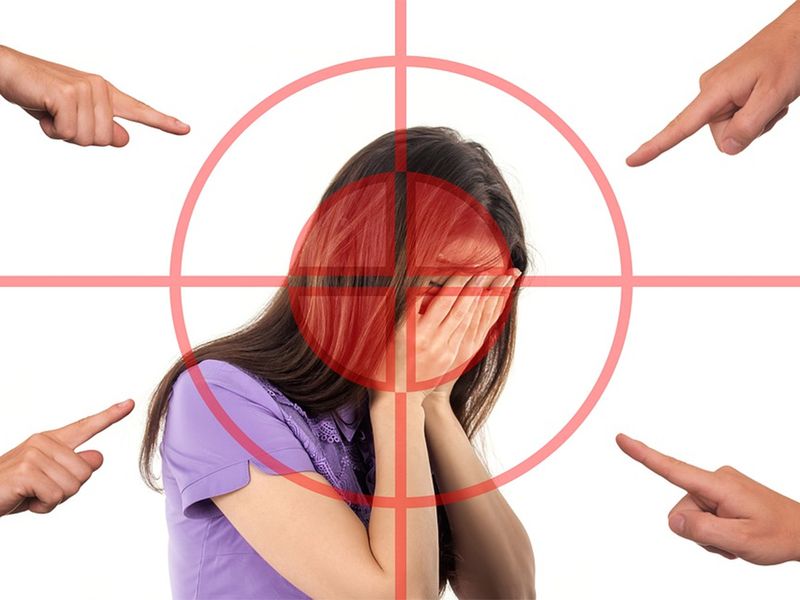
Teenagers falling off buildings, or slashing the wrists can only mean that the signs of distress and the unspoken plea for help went unnoticed. And the loss of a child can bring untold misery to parents. The guilt that accompanies can scar them so severely that many never really recover.
Ten years ago, a consultant psychiatrist who worked with up to 15 schools in Abu Dhabi, said that at least one or two students from each school have had suicidal thoughts. In the US, suicide is the third leading cause of death for 15- to-24-year-olds, and the sixth leading cause of death for 5-to-14-year-olds. These stats are utterly chilling. Similar statistics for the UAE are not available.
Mental health experts stress that the triggers do not emerge overnight. The distress signals are there; parents and teachers must be alert to it and act quickly. Only then can we save these precious lives. Lives that would have bloomed and flourished in the years to come.
How to spot the signs in children
Many of the symptoms of suicidal thoughts are said to be similar to depression. Here’s a list of signs to watch out for, compiled by the American Academy of Child and Adolescent Psychiatry:
Change in eating and sleeping habits
Withdrawal from friends, family, and regular activities
Violent actions, rebellious behaviour, or running away
Drug and alcohol use
Unusual neglect of personal appearance
Marked personality change
Persistent boredom, decline in the quality of schoolwork
Frequent complaints about physical symptoms, such as stomach aches, headaches, fatigue, etc.
Loss of interest in activities
Refusal to accept praise or rewards
Teenagers with suicidal tendencies are also likely to:
Complain of being a bad person or feeling rotten
Say: I won’t be a problem for you much longer, Nothing matters, “It’s no use, and I won’t see you again
Give away favourite possessions, clean his or her room, throw away important belongings.
Become suddenly cheerful after a period of depression
Have signs of psychosis (hallucinations or bizarre thoughts)
How to prevent teenage suicides
If one or more of the signs occur, parents must talk to their child and seek professional help. Depression and suicidal feelings can be treated, psychiatrists say. For that parents or relatives have to be aware that the teenagers are grappling with issues which they are unable to resolve satisfactorily. A psychiatric examination can help in diagnosis, and treatment plans can be developed.
If one or more of the signs occur, parents must talk to their child and seek professional help. Depression and suicidal feelings can be treated, psychiatrists say. For that parents or relatives have to be aware that the teenagers are grappling with issues which they are unable to resolve satisfactorily. A psychiatric examination can help in diagnosis, and treatment plans can be developed.
Experts say, if a child says, I want to kill myself, always take it seriously and seek immediate assistance from a qualified professional. Untreated mental health problems are a leading cause of suicide. With support from family and appropriate treatment, teenagers who are suicidal can heal and return to a healthy life.
What are the treatment options?
If a child is battling depression or has suicidal tendencies, parents should explore all treatment options with the help of a specialist. Doctors say talk therapy is a good treatment for mild and moderate cases. If the child responds well, there won’t be any need for medication, helpguide.org, a mental health and wellness website, says.
If the issues are not resolved, medication may be one of the options. If the child is acting dangerously or at risk of suicide, then medicine and/or constant observation may be necessary.
But medication comes with risks. The impact of antidepressants on the brains of youngsters is not fully understood. Some researchers feel the drugs may affect brain development, helpguide.org says. So parents should avoid the pressure of medicating children, and seek a second opinion.
What about children with family history?
Depression runs in families, which means inherited genes can make a person vulnerable to mental illnesses. A British research team discovered a gene that is found in family members battling depression, a report in Health Line said. The chromosome 3p25-26 was found in more than 800 families suffering from depression.
Research also shows that individuals with parents or siblings who have depression are up to three times more likely to have the condition.
Besides genes, the home environment is a contributory factor, a report in Psychology Today said. Abuse and conflict can be persistent in families where mental illnesses are prevalent, and individuals who come from these environments suffer more severe forms of depression.
What parents should do
This is what the US National Alliance of Mental Illness’ guidelines to parents say:
Give your child emotional support: Parents should spend quality time with their child; encourage open and honest conversations, listen to what the child has to say, and acknowledge their inner struggles.
Encourage a healthy lifestyle: Parents must encourage the child to exercise regularly, eat healthy meals and sleep regularly.
Help them feel connected: To prevent loneliness, parents should encourage their child to join a club or attend activities. Also, give them ideas to participate in social events and organise family gatherings.
What parents should never do
Parents should not put undue pressure on children to perform well in studies sports, arts or other activities, experts say. While high expectations can be healthy, constant stress can have repercussions.
Such children are at risk of developing mental illnesses; have self-esteem problems which makes them feel they are not good enough; sleep deprivation as they stay up late studying; higher risk of injuries as they may continue to participate in sports despite injuries; increased likelihood of cheating as the focus is on achievement and a refusal to participate in events for fear of failure.
It is good to have a healthy amount of supervision, but that shouldn’t develop into possessiveness. Parents should trust children unless they show signs of unhealthy behaviour. Stalking children on social media sites will only serve to undermine their confidence in parents, and that can be detrimental to connecting with them.
Parents should have an open, healthy relationship with children, or else it will be challenging for the youngsters negotiate the quagmire of mental illness.
How suicides can be prevented
Alex Abraham, Senior Associate Editor
In 1974 a newsreader named Christine Chubbuck shot herself on live TV in Florida, US. There were no warnings, just a shot behind the ear. She was rushed to hospital and pronounced dead about 14 hours later. A week before her suicide, she had told the night news editor that she had bought a gun and joked about killing herself on air. The editor later said that he did not respond to what he thought was Chubbuck’s “sick” attempt at humour and changed the subject.

The video footage of her death was sealed by the station’s manager and has not been seen since.
Over the years millions of people have taken their lives. The World Health Organisation estimates that about one million people die each year from suicide. But unlike Chubbuck, the last moments of most people who commit suicide would have been quiet, with only their own thoughts to fight.
But whatever the reasons for suicide – whether it be a middle-aged man who has taken the tragic step because he has lost all his money, or a young child who has not done well in the exams, or a farmer who is steeped in debt and cannot find a way out – one question keeps coming back to haunt those still alive: Could this have been prevented?
Experts in the field of psychology are using their skills to identify those ‘at risk’ and helping treat people who are struggling. Scientists are exploring brain changes and risk factors, testing new therapeutic inventions, and educating the public on ways to reduce suicide rates.
Who is at risk?
Psychologists have tried to find out if it is possible to predict suicide-risk. According to a study at Harvard University, after 50 years of research, prediction of suicidal behaviour was only slightly better than chance. Today algorithms and machine learning are being used to better understand suicidal impulse and take preventive action.
In 1994, Mrazek and Haggerty developed a model for interventions for mental health problems. This model continues to be used in suicide prevention strategies around the world. The model divides interventions for mental health problems into three categories – prevention, treatment and continuing care. Intervention is further classified as universal (large populations), selective (target groups) or indicated (individuals beginning to exhibit suicidal thoughts or behaviour).
Knowing the warning signs for suicide and how to get support can help save lives. In fact, some experts feel it is better to confront the issue directly rather than beat about the bush.
The National Institute for Mental Health in the US has listed five steps to help someone in emotional pain.
1. Ask: ‘Are you thinking about killing yourself?’. As strange as this may sound, studies show that asking this question to ‘at risk’ individuals does not increase suicides or suicidal thoughts.
2. Keep them safe: Removing lethal items or reducing a suicidal person’s access to dangerous goods is an important part of suicide prevention.
3. Be there: Listen to people and learn what they are thinking and feeling. In today’s hyper-active world, finding time for a person in need does not come easy. But looking out for warning signs, lending a listening ear and being there for people in desperate situations will play a role in lowering the number of suicides.
4. Help them connect: Help people in need of counselling connect to hotlines, or with a mental health professional, trusted family member or friend.
5. Stay connected: Studies have shown that staying in touch after a crisis or after being discharged can make a difference and bring the number of suicides down.
In the end, a life lost to suicide is a reflection of the society as much as of an individual. As part of a society, all members play a role in taking care of each other and looking out for the weak. A joint effort can play a huge role in minimizing deaths due to suicide.
[ad_2]
Source link



